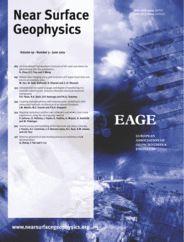
Full text loading...
 , Rajesh Kumar Dash1,2, D.P. Kanungo1,2,3
, Rajesh Kumar Dash1,2, D.P. Kanungo1,2,3 , P.K.S. Chauhan2,3
, P.K.S. Chauhan2,3
The influence of rainfall on the Pakhi landslide has been examined using a pre‐ and post‐monsoon timelapse electrical resistivity imaging technique. The results obtained have been used to characterize the subsurface based on the depth and degree of water seepage and degree of weathering. The combined interpretation of pre‐ and post‐monsoon electrical resistivity tomography is not very common in landslide characterization. This study focuses on post‐monsoon electrical resistivity tomography investigation and its interpretation in conjunction with earlier research on pre‐monsoon investigations. The advancing water seepage across depth was reflected in the sharp decrease in the post‐monsoon resistivity value of the top (near‐surface) colluvial layer, mostly at the crown and toe portions of the investigated slope, as compared to that of weathered dolomites and fresh dolomites. Hence, the water‐saturated colluvium deposits could easily be delineated using a timelapse pre‐ and post‐monsoon electrical resistivity tomography technique. On the basis of degree of saturation, the materials were classified into four zones, namely: a highly saturated zone with resistivity values <600 Ωm; a fairly saturated zone with resistivity values 600–2500 Ωm; a low saturated zone with resistivity values 2500–4500 Ωm; and an unsaturated zone with resistivity values >4500 Ωm. Further, a twofold classification of dolomites based on the degree of weathering, namely highly weathered dolomites with resistivity values 1000–2500 Ωm and low weathered dolomites with resistivity values 2500–4500 Ωm, is presented. This type of information will add value to the design of landslide‐monitoring programmes and also for landslide stability analysis. Therefore, the method can be highly recommended as a cost‐ and time‐effective as well as an efficient way for characterization of potential landslide slopes.

Article metrics loading...

Full text loading...
References


Data & Media loading...

